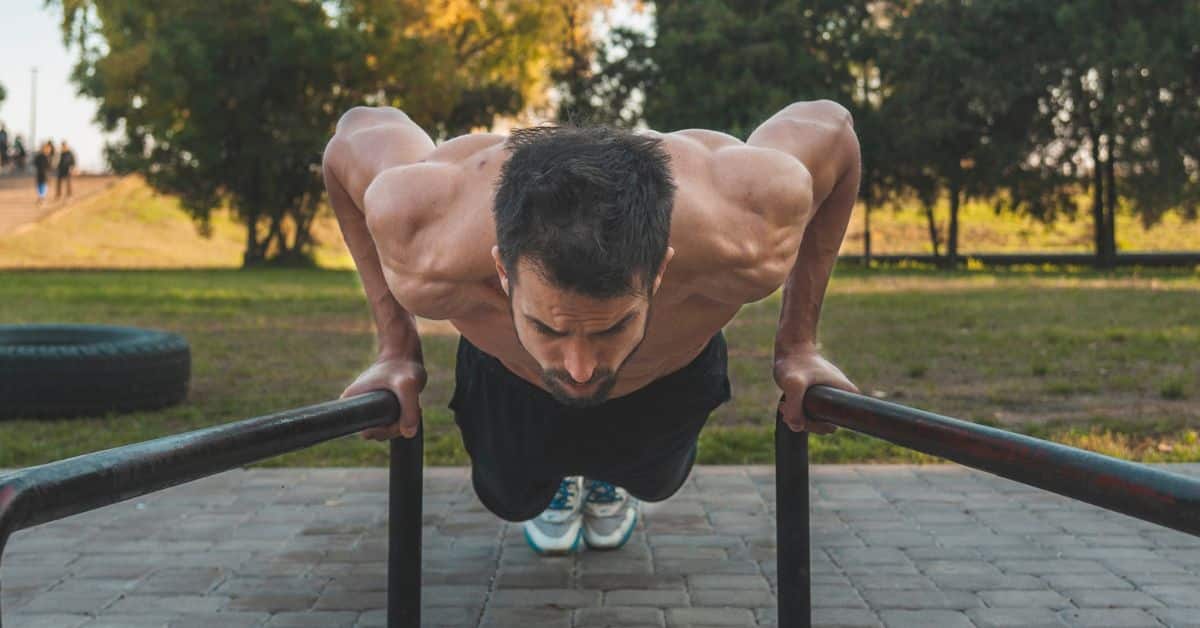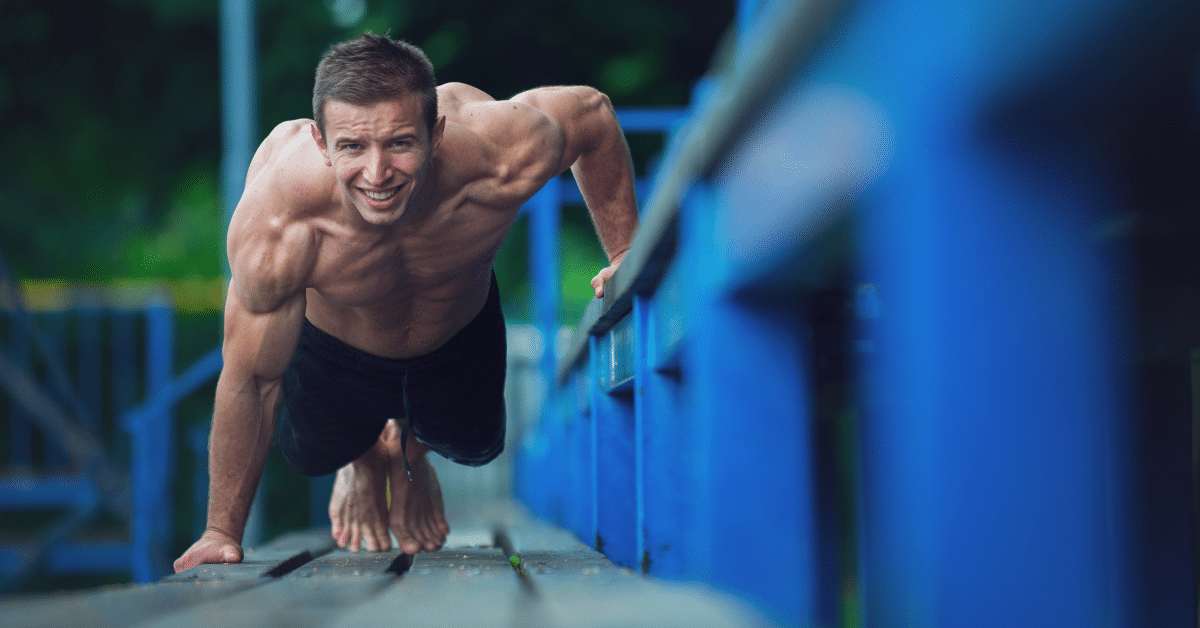Calisthenics vs Pilates, which builds the most muscle and strength? It’s a question I’ve heard more and more since the surge in popularity of both Calisthenics and Pilates in the last decade. Both are bodyweight workout methods that exercise your whole body. It’s unsurprising that they attracted equal amounts of attention from fitness practitioners worldwide. There are some significant nuances, though. I’ll compare Calisthenics vs Pilates and determine which workout method is best for building muscle, strength, mobility and shedding weight. Calisthenics vs Pilates, which is better?
Key Takeaways Calisthenics vs Pilates
- Calisthenics is bodyweight exercise that has been around for thousands of years.
- Pilates is mind-body exercise that was invented in the 1920’s.
- Neither Calisthenics nor Pilates is very good at shedding weight. Bodyweight exercise adds weight in lean muscle mass.
- Both Calisthenics and Pilates can supplement a diet to shed weight, using part of the stored body fat to create new muscle. This will increase weight, but it will be muscle since muscle is heavier than fat.
- Calisthenics builds more muscle mass as it is a more intense form of bodyweight exercise than Pilates.
- Calisthenics is more versatile when you want to build more strength, with Weighted Calisthenics
- Pilates creates a higher degree of mobility right out of the bag and has a higher focus on core strength. Calisthenics also builds mobility but focuses more on functional strength.
- Calisthenics can do everything that Pilates does and much more. Pilates can do only a small fraction of what Calisthenics also does but slightly better. Between Calisthenics vs Pilates, Calisthenics is the more efficient choice.
What is Calisthenics?
This is a question I get a lot: “what is Calisthenics?” There’s a lot to unpack here, and you can follow the link to a very (very) in-depth article on the definition of Calisthenics[1], its technicalities, core principles and foundations and the science behind how Calisthenics builds muscle. I’ll go over the core principles of what Calisthenics is:
Calisthenics is Bodyweight Exercise Using Minimal Equipment
At its heart, Calisthenics is bodyweight exercise. You use your body’s weight as resistance during your exercise, which causes muscle overload. These exercises are modular. They can be varied in number of repetitions and sets and different exercises can be put together to form a full-body workout in a Calisthenics Program. This way, Calisthenics exercises the whole body effectively and requires only minimal equipment.
Calisthenics Relies on Progressive Overload and Compound Exercise
The method by which Calisthenics grows your muscles and strength is through progressive overload. Progressive overload means that your muscles are brought to near their maximum exertion (through repetitions, sets and exercise difficulty) and then allowed to rest. This induces muscle growth to better cope with what the body believes is the new norm for exertion. Progressive overload is continuously applied to see continuous, albeit diminishing, returns.
Calisthenics is effective and efficient as a full-body workout by using compound exercises. These exercises target multiple muscles at once and often with a desirable resistance distribution across the targeted muscles. Compound exercises are more efficient than isolation exercises, like for instance the difference between Calisthenics vs Weightlifting.
Calisthenics Means Beautiful Strength
The literal transliteration of Calisthenics in English means Beautiful Strength. Calisthenics was practiced as far back as the times of Alexander the Great[2] and both men and women practiced Calisthenics to stay in shape and to stay beautiful. The techniques that Calisthenics promotes are proven to be effective and efficient. Both common sense application throughout millennia of people practicing Calisthenics and the modern sciences prove that it works[3].
The Core Benefits of Calisthenics
Here are the core benefits of Calisthenics:
- Improves Strength and Muscle Size
- Improves Biomechanics
- Enhances Stamina
- Requires Minimal Equipment
- Promotes Mental Health
- Improves Social Contacts
What is Pilates?
Pilates is a mind-body exercise method that borrows heavily from Yoga but adds modern bodybuilding principles and machines to enhance the body-aspect of it. It is a much newer form of exercise than Calisthenics. Pilates was developed in Germany in the 1920’s during a time when modern science started to have a huge interest and impact on bodily exercise.
Pilates is Mind-Body Exercise Using Equipment
Pilates was created by Joseph Pilates by studying Yoga and modern (at the time) bodybuilding. Pilates is a system of bodyweight and weighted exercises that focus on building core strength, stability, flexibility, mobility and posture. Movements, either with or without mechanical resistance, are performed with a specific goal in mind. That goal could be greater core strength, better stability, enhanced range of motion, and so on.
Many mechanical training aids were invented to help with Pilates exercise. Most famous of these tools are the Magical Rings, the Reformer, the Cadillac and the Wunda (wonder) chair. These esoterically named devices reflect how Joseph Pilates attempted to combine ancient Yoga practices with the prevailing “scientism” (which is not the same as scientific)[4].
Pilates Relies on Whole Body Movements and Core Activation
Whole Body Movement is a holistic approach to bodyweight exercise. Ideally, a Pilates exercise uses the whole body during the exercise with a strong focus on the core muscles and on posture. This is most achieved by first putting the body in a stress position where it must remain tense to maintain the posture. From this position exercise movements are made that may focus more on a specific body part.
Pilates Was Created in the 1920’s
Pilates spurred the development of many training aids. It was invented during a time of great scientific progress and when doctors and other scientists took a great interest in how modern medicine and engineering could help improve exercise and bodily health. It is during this time, the 1920’s, that bioengineering started to become a recognized branch of the medical sciences.
Still practiced today over 100 years later, Pilates is a great way to get lean and flexible. This is in part because the body culture of the 1920’s is very similar to our modern body ideals and especially for women. Lean and flexible were the ideal then as much as it is now, sandwiched in between the more robust body ideals of the 19th century and early post-WWII.
The Core Benefits of Pilates
Summed up, the benefits of Pilates are:
- Improves core strength and stability
- Improves posture
- Improves mobility
- Improves flexibility
How Does Calisthenics Compare vs Pilates
Now that we have the basics of both exercise methods covered, we can start comparing Calisthenics vs Pilates.
Calisthenics vs Pilates for Weight Loss
I always say that you shouldn’t be looking at your weight, but instead you should look at your body fat percentage. That is a far better indicator of your physical health as it relates to weight.
It is a commonly perpetuated myth that doing bodyweight training will make you lose weight. This is not true. The opposite will happen, and you will gain weight instead. This is because muscle fibers are heavier than fat cells. As you replace fat with muscle, you tend to gain weight.
If you want to lose weight because you feel like you’re too heavy for Calisthenics, a diet is the best way to lose excess fat. Of course, you also need to start moving as bodyweight exercise like Calisthenics or Pilates contributes to an overall healthy body. A healthy Calisthenics Diet fits in with this overall strategy of substituting fat cells with muscle fiber.
Calisthenics vs Pilates for Muscle Growth
Both Calisthenics and Pilates can help you gain muscle. However, Pilates focuses on whole body movement and Calisthenics on compound movement. Compound movement is more efficient at gaining muscle mass. It is also easier to induce progressive overload with compound movements than with whole body movements. For building muscle, Calisthenics is the better decision.
Calisthenics vs Pilates for Strength
Pilates can certainly build a strong core that can hold a posture or a stress position well. The outlying muscle groups, however, are far less activated with Pilates exercise than with Calisthenics exercise. With sufficient core exercises as well, Calisthenics will build the most strength.
Calisthenics vs Pilates for Mobility
Calisthenics has some strong Mobility exercise facets; however, Pilates is far more the “Yoga like” method of the two. The core principle of Pilates is flexibility, range of motion and core strength which very neatly summarizes what a Mobility Program also seeks to achieve.
Conclusion about Calisthenics vs Pilates and Which the Most Builds Strength
Both exercise forms use your bodyweight to work out your muscles. Calisthenics is a much purer and older form of bodyweight exercise than Pilates. The ancient Greeks simply did not have the technology to create contraptions like the Cadillac or the Wonda Chair. That is a major cultural difference between the origins of both Calisthenics and Pilates and which clearly reflects in the way they go about promoting bodily health.
Another product of this differing culture is the general esthetics that you can expect to build. Pilates, a product of the 1920’s where slim and lean body figures were the fashion, does tend to make you slim and lean. Today, the feminine body ideal is largely the same as in the 1920’s. Conversely, the ancient Greeks had a very similar masculine body ideal to ours and Calisthenics was and is the most effective way to get that physique.
My immediate conclusion must be that Calisthenics is better for muscular, functional strength and large lean muscle mass. Pilates is better for lean and slim, fit and flexible physiques.
It makes sense then that Pilates is most popular among women, whereas Calisthenics is more popular among men. These bodily ideals have survived the ages for a reason, and different exercise techniques have come and gone to facilitate this. Except Calisthenics, of course. Calisthenics came and simply endured.
I must add to this that you can also get lean with Calisthenics, just like you can with Pilates. There is nothing holding you back from a more whole-body exercise form with Calisthenics whereas the concepts behind Pilates pretty much exclude you from isolating muscles. Calisthenics for women proves this point perfectly, whether you’re looking for muscle mass or for a leaner build.
This is why I do Calisthenics. It is the most versatile exercise form. You can get slim, bulked, strong, agile, mobile and endurant with Calisthenics. Pilates can get you some of that, but not all of it. Calisthenics vs Pilates? I choose Calisthenics every day.
Frequently Asked Questions About Calisthenics vs Pilates
Here are a few more questions I found about Calisthenics vs Pilates that are interesting.
Is Pilates basically calisthenics?
Pilates is definitely not Calisthenics. The are many differences between Calisthenics vs Pilates from their core principles and up to which exercises and tools they use. Calisthenics is bodyweight exercise utilizing compound exercise to induce progressive overload. Pilates is mind-body exercise using whole-body movements (stress positions) focusing on core strength and stability.
Can I combine Calisthenics and Pilates?
Yes, you can combine Calisthenics with Pilates. Pilates is better at increasing your range of motion and flexibility. Calisthenics is better at everything else, like functional strength and muscle growth. However, Calisthenics alone is also sufficient to become lean, flexible and strong.
Is Pilates enough to build muscle?
Pilates is not intended to cause strong muscle growth. It focusses more on core strength, abdominal strength, flexibility and stability.
Sources
- Definition of calisthenics. (n.d.). In Merriam-Webster Dictionary. https://www.merriam-webster.com/dictionary/calisthenics#etymology-content-section:~:text=Word%20History-,Etymology,-Greek%20kalos%20beautiful
- Montero, Á. M. (2019). Sports training in Ancient Greece and its supposed modernity. Journal of Human Sport and Exercise. https://doi.org/10.14198/jhse.2020.151.15
- Thomas, E., Bianco, A., Mancuso, E. P., Patti, A., Tabacchi, G., Paoli, A., Messina, G., & Palma, A. (2017). The effects of a calisthenics training intervention on posture, strength and body composition. Isokinetics and Exercise Science, 25(3), 215–222. https://doi.org/10.3233/ies-170001
- Scientism and the Study of Society. Part I on JSTOR (n.d.). www.jstor.org. https://www.jstor.org/stable/25495 9 (35): 267–291 ‘definition of scientism: “slavish imitation of the method and language of Science”’



![The 8 Best Stretching Apps & Stretching Programs of [year] Best stretching app program](https://085.wpcdnnode.com/calisthenicsworldwide.com/wp-content/uploads/2023/06/172-CWW_stretching-app-program.jpg)


